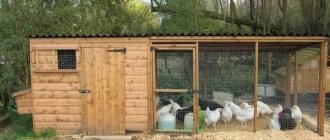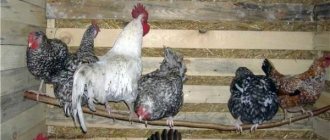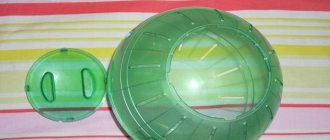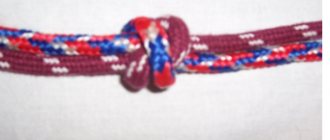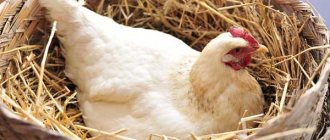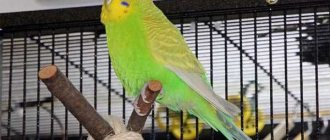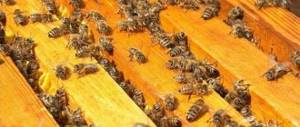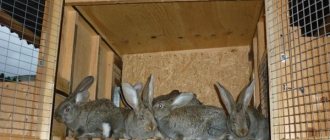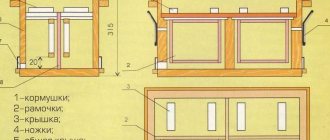The role of the aviary in the household
Properly organized keeping is the key to successful chicken breeding. The presence of an enclosure is one of the key factors providing appropriate conditions. Making it with your own hands is not at all difficult, and the result of the effort expended will bring tangible results.
Regular walking of poultry, including chickens, helps the body produce vitamin D, which activates metabolic processes and improves general condition.
The main functions of an enclosure, which is easy to make on your own site:
- Protection from predators. Hens and chickens have many enemies, from domestic cats and dogs to foxes, martens and magpies. It all depends on the region where the enclosure is located.
- Weather protection. On a hot afternoon, the enclosure will provide the chickens with saving shade from the sun, and in bad weather it will save them from rain and hail.
- It is also worth making an aviary in order to provide chickens with comfortable walking and rest.
- The design takes care not only of the conditions for raising poultry, but also protects the garden plot from the chickens themselves, who are not averse to eating the grown greens.
Staying chickens in a confined space without sunlight is fraught with the development of rickets. Walking in the enclosure provides an opportunity to dilute the feed diet with fresh grass and nutritious worms. Reducing food costs is another compelling argument for creating an enclosure on your property.
The simplest design is a frame based on wooden beams. Slate, thick film or plywood are suitable as a roof; the walls are fenced with a metal mesh. We will consider in detail what kind of enclosures can be made without resorting to the help of professionals.
Making a pen for chickens
When you decide to build a pen for chickens with your own hands, you should take into account the main criteria on which the design of the building depends:
- number of chickens,
- age of birds,
- reliability of the material used,
- safety for livestock.
Of course, the pen is not a permanent place for the chickens to live, but it will take a lot of time until they grow up and are transferred to the chicken coop. When building it with your own hands, it is necessary to take into account the breed of chickens, because each of them has its own size and growth rate. For example, representatives of the egg breed grow slower than meat animals, so they will need less space with the same number of animals. At the same time, chickens of egg breeds are more active and mobile.
For the design, it is necessary to choose a material that is reliable, strong and safe for chickens
It is also very important that the structure is well fastened, since if this is not ensured, then the slightest physical impact may damage the fence. The presence of cracks leads to birds leaving the pen area or predators entering there. Also, when building a pen with your own hands, it is important to exclude the presence of sharp parts and nails protruding from the fencing elements, since they are dangerous for the chicks
Having a roof on one half of the pen will help provide shelter that the chicks can use if it is windy or rainy outside.
Also, when building a pen with your own hands, it is important to exclude the presence of sharp parts and nails protruding from the fencing elements, since they are dangerous for the chicks. Having a roof over one half of the pen will help provide shelter that the chickens can use if it is windy or rainy outside. This video from the Russian House channel will help you understand what a structure for walking chickens should look like
This video from the Russian House channel will help you understand what a structure for walking chickens should look like.
Tools and materials
The design of the building for chickens may differ, however, the set of materials will remain the same. When building a poultry pen with your own hands, you will need the following:
- wooden boards in the amount of 8 pieces, of which 4 are 1.5 m long, and the same number are 1 m long,
- four bars 2 cm thick,
- self-tapping screws or self-tapping screws
- a piece of fabric or mesh, as in the photo,
- a large slate sheet or other material for constructing a roof in a pen with your own hands,
- nails and a hammer (a special construction stapler can replace them).
Step-by-step instruction
If all the materials have already been purchased, you can start building the pen with your own hands.
- First, you need to fasten the boards together with self-tapping screws, resulting in a box that serves as a frame. Using bars, the height of the building is set.
- The northern part of the enclosure should be covered with fabric or a wall of boards to provide shelter from wind and drafts.
- The sunny side of the pen must be lined with netting. To prevent the material from sagging, you should make wooden slats and attach a mesh to them.
- Slate and mesh are suitable as a roof. One part will provide shade on sunny days, and the second will protect the chicks from predators.
You can also make a door from slate, through which free access to the enclosure will open. The gate can also be made from improvised materials that were left over after the construction of the main structure.
Types of enclosures
There are many design features of aviaries, but all devices for walking birds are divided into two large categories - stationary and mobile. The main condition of each building is convenience for the full development of hens or chicks.
Attention! For freedom of movement, there should be no more than 4 adult birds per 1 m2.
Let's look at possible options for arranging an enclosure that you can do yourself.
What is a bird aviary?
Initially, aviaries were intended only for birds, as evidenced by the French noun “la volière” (from the verb to fly - “voler”). However, in our country this beautiful word began to be used to describe any large cages in which different species of animals without wings can live comfortably.
In our case, an aviary is a spacious room for birds. But it can be characterized differently, depending on who it is being built for. For example, if a “mini-apartment” is made for parrots or canaries living under the same roof with the homeowners, then this design is a spacious cage. When a “building” for permanent residence is made for large poultry, the aviary is a large enclosure, sufficient for the winged guests to walk around.
In general, an enclosure is any cage whose dimensions do not allow one person to lift it. However, it can be a structure of 600x600x800 mm and an area in the house that is simply fenced off from floor to ceiling.
If we talk about the types of such structures, they are divided into three types. There are:
- spacious structures for rooms, their dimensions significantly exceed the dimensions of traditional cells;
- outdoor enclosures are intended for seasonal housing of animals;
- pens, their task is to serve as a complete, comfortable home for birds all year round.
A do-it-yourself bird aviary is a logical decision that owners make for various reasons. Often they are simply not satisfied with the size of ready-made models for rooms. Often such structures simply cannot be painlessly fit into a small room. The high price is another, not very encouraging fact.
The most difficult option is to build a permanent enclosure for pigeons, pheasants, chickens or geese, ducks, etc. In this case, an additional room will be equipped in the enclosure, protected from bad weather. Therefore, the owners of feathered “living creatures” forced to live in captivity have to provide space, heating, and ventilation for mini-premises. They need not only to build comfortable housing, but also to insulate the floor and walls of the structure.
Summer
A simplified version of a stationary enclosure design. A small area is fenced on three sides with a mesh; it is better to cover the fourth with boards. This will give the chickens protection from the wind. Such an enclosure may be located in one place, but there is an opportunity to move it to another area. For example, if the chickens have plucked all the grass and there is a need to replenish the diet. The suitable cell size for the mesh is 15x15 mm. Such an aviary fencing will provide reliable protection even from sparrows and small rodents, not to mention larger predators.
Stationary
When breeding chickens annually, it is preferable to make a stationary enclosure intended for use for a long period. Main elements of the structure:
- The base is made of strip foundation. The concrete belt will prevent undermining and penetration of predators into the enclosure.
- Supports concreted or driven deep into the ground.
- There is a net stretched between the pillars.
- The vestibule at the entrance will prevent hens or chicks from scattering when the owner comes inside.
It is recommended to make a stationary aviary around an insulated chicken coop. This design does not require a roof - chickens can freely hide from bad weather in a closed structure. If they want to bask in the sun during the daytime, they move freely around the enclosure.
We build an aviary for chickens with our own hands
First, let's talk about the simplest type of enclosure. It is a spacious room, which consists of a wooden frame covered with a fine metal mesh.
Such a mesh should have a cell size of no more than 1.5x1.5 cm. It will prevent small rodents and sparrows from entering the enclosure where grain food can be found.
Before starting construction of an enclosure, its area must be determined . Based on this, the number of wooden beams that play the role of a frame is selected.
They are knocked together into a rectangular shape, onto which the mesh is then stretched. When constructing the frame, it is important to use short nails so that their sharp ends cannot injure chickens and humans during operation of the enclosure.
Boards are always nailed to the back of a timber frame. They protect the chicken population from the wind and possible predators. The upper part is covered with a roof that catches precipitation.
A gable roof is best suited for these purposes. Precipitation does not linger on it for a long time, so the structure is not subjected to strong pressure.
A simple enclosure made of beams and mesh
This type of enclosure can only be installed in dry areas where groundwater runs deep underground. It is desirable that the soil on the site be sandy.
If it is clayey, then before construction its top layer is removed (about 30 cm of soil). In its place, 2 cm of lime is poured, and the rest of the hole is filled with river sand or small stones.
Simple enclosures are usually installed as far away from the farmer's home as possible. In this case, it is better if its front side faces southeast or south. In this position, the chickens will be able to receive the maximum amount of sunlight.
On the foundation
This type of enclosure, also called a garden enclosure, is always installed on a solid foundation. It will protect the structure from the penetration of predators, and will also ensure a long service life.
To create a foundation for a future enclosure, a ditch 0.7 m deep is dug. Large logs or stones are placed in it, which are filled with cement mixed with sand.
After hardening, vertical supports are installed on the base, the main task of which is to hold the frame of the enclosure.
Near the entrance to the enclosure you can make a small vestibule . It is made of boards that prevent birds from flying out when a farmer enters.
Aviary for chickens on a foundation
After completion of construction work, the enclosure is covered with lime on the inside and painted with oil paint on the outside. However, it is better to paint the mesh used to fence the enclosure with paints that do not contain lead.
As a rule, a garden aviary is always built together with an insulated chicken coop. This allows you to protect the bird population from any colds.
In the poultry house, chickens will be able to warm up from the cold and also hide from bad weather. The barn itself, where the birds will spend the night, should have the same height as the aviary. It should be equipped with electric lighting, ventilation, heating and window openings.
Mobile option
This type of enclosure is often used for raising young animals in the open air. As a rule, such an enclosure is designed for only one hen, but not always.
To build it you will need wooden boards, nails and a metal mesh with a cell size of 10x10 mm.
It is believed that the optimal size of an enclosure for young animals is 200x100x60 cm . At the beginning of construction, a frame is knocked together to fit the size of the future mobile enclosure.
After this, wooden boards are nailed to it, to which a fine mesh is attached. It is necessary to pay attention that the ends of the mesh should not damage the chicks and the hen. For ease of carrying, handles are attached to both sides of the enclosure.
More complex forms require wheels that allow you to move the structure with ease.
Mobile and hanging enclosures
It is better to make an aviary for chickens made of mesh mobile. The approximate dimensions of the structure are 0.6x1x2 m.
Advice! To make it easier to move the mobile enclosure, it is equipped with handles or wheels.
Hanging enclosures are a little more difficult to make, so they are used less often. The peculiarity of the design is that it does not come into contact with the ground, which provides reliable protection from undermining by predators.
Selecting a location
To avoid diseases and other unpleasant moments in the process of raising chickens, it is important to find a suitable place for the aviary. This is especially true for structures that are planned to be made permanent; changing the location of a mobile structure will not be difficult.
Basic recommendations for placing an aviary:
- Sufficient landscaping of the site. Fresh grass is extremely beneficial in a chicken's diet.
- Make a practical structure around the chicken coop so that the birds have free access to shelter during bad weather.
- It is advisable that there are no paths nearby so that you are less likely to disturb the bird and avoid inhaling unpleasant aromas yourself.
- Dense vegetation will unnecessarily shade the enclosure, so it is preferable to make a fence in a lighted area.
- Fertile soil in the location of the enclosure will ensure rapid growth of new grass.
- It is preferable to make the structure on a hill or arrange a drainage ditch around it. Such measures will prevent stagnation of water after rains and ensure rapid drying of the soil.
It is optimal when the sun illuminates the enclosure in the first half of the day, so that at the height of the heat the chickens have saving shade.
What should an aviary be like?
Building an aviary with your own hands is not difficult. But before starting construction, you should know about the functions that the planned structure should have. These include:
- protection of livestock from attacks by predators;
- shelter from the sun, wind, and precipitation;
- sufficient space for chickens to rest;
- free access to food and feed;
- free movement within the designated area.
It is best to choose a location close to the main place where the birds are kept, so many farmers supplement their chicken coops with aviaries.
You should also take care of a suitable floor covering where construction is planned. It is important for chickens, adult birds and even broilers to receive greens, worms and insects for food.
On concrete areas they will be deprived of this, so ordinary soil is considered the best place for enclosures.
If the aviary is not adjacent to the chicken coop, then you should also know where it is best to install it. When choosing a location, the following are taken into account:
- Distance from residential buildings, as well as fruit vegetation. The aviary is located in the most remote part of the yard so that it is easily visible to people.
- Noisy place. The most favorable areas are those remote from where other birds and animals are kept, as well as from the roadway.
- No drafts or shadows.
The correct location of the aviary is the basis for the comfort of birds. And their productivity will depend on how comfortable they feel.
The location of the bedding in one of the corners of the enclosure also plays an important role. The basis of such flooring is sand, and the covering can be made from dry hay.
Preparatory process
The initial stage is determining the size of the chicken enclosure and drawing up a drawing. The principle here is that the larger the enclosure, the more comfortable the chickens are. The minimum calculation is 4 birds per square meter; ideally, make a structure where 1 chicken is allocated 2 m2.
The material is prepared taking into account the chosen design of the chicken enclosure. A chain-link mesh will be required in any case; the support posts can be wooden, but it is preferable to make the frame of the enclosure from metal elements. It is better to choose a galvanized mesh; such a product will last longer.
An example of a drawing of what kind of chicken coop with an aviary for chickens can be made is shown in the photo:
Tools are selected based on the frame material. For an enclosure with wooden supports, prepare a saw, pliers and a hammer. The pillars are driven into the ground with a sledgehammer. If you plan to make the frame of the chicken enclosure metal, assembly is carried out using self-tapping screws with a screwdriver or using a welding machine. In any case, you should have a hacksaw on hand. The presence of a strip foundation in the plan forces you to take care of the availability of appropriate materials and tools.
How to make it yourself
Required tools and materials
In order to build a stationary chicken run, you need the following basic materials and tools:
- wooden beams for support;
- wooden boards;
- material for processing beams (bitumen, antiseptic, durable cellophane, etc.);
- broken brick or crushed stone;
- cement for the foundation (optional, at the request of the master);
- material that will serve as a barrier wall (galvanized mesh with a rod distance of no more than 1.5 cm, remnants of corrugated board and similar materials);
- metal corners;
- rods, wire;
- nails and hammer.
Stationary pen
Before you start building a pen for chickens, you need to decide what you should get in the end. And for this, it won’t hurt to develop a plan on which to indicate all the dimensions of the future structure, as well as what the paddock will consist of.
Such a plan will serve as a kind of support for subsequent thinking through steps on how best to use the available space and materials. In addition, this will significantly save time for the builder.
After completing work on the diagram, you can begin to bring the idea to life:
- You need to decide on the location where the finished building will be located. This should be an area that is moderately lit (not in the scorching sun), where there is fairly dense and clean vegetation and contact with other animals and birds, as well as people, is kept to a minimum. This way, the chickens will be most comfortable walking, and they will not risk getting sick.
- Next, you need to prepare the area for construction. To prevent chickens from digging holes in the ground and escaping, you need to build a foundation. To do this, you can dig a small hole around the perimeter of the paddock and put logs in it, and then fill it with concrete, or fill this area with crushed stone. You can also lay a metal mesh on the ground, but this is a less safe way of arranging the foundation.
- After the foundation is ready, it is necessary to install support pillars (take wooden beams for this). This will ensure the strength of the frame. Before installation, it is better to treat them with an antiseptic, bitumen, or wrap with film those parts that will go into the ground.
- First, you need to dig holes at least 50 cm deep for the supports. The height of the enclosure will then reach two meters.
- Then you need to weld the corners to the support beams, close to the ground. The future walls and ceiling of the pen will be attached to them, which will serve as a galvanized mesh.
- You need to start tightening the mesh from the top, and then move to the sides of the paddock. It is better to install it with overlaps, because over time the mesh material may come apart and unwanted holes will appear. The edges of the mesh must be connected using steel wire. Nails will also work, but they should be as short as possible so that the chickens do not injure themselves on them in the future. Part of the mesh walls can be replaced, for example, with corrugated sheeting, but it is not recommended to make a complete structure out of it, so as not to “close” the birds from the outside world.
The stationary law for birds is ready!
Portable pen
Many farmers will also be interested in how to build a portable paddock?
You don’t need to make a foundation for it; it will be enough to make a metal frame from corners and mesh. The mesh should also be pulled over the top and then over the sides, leaving an allowance of 20 cm. A mobile canopy can be attached to such a walk in case of scorching sun or rain.
And to completely modernize such a structure, you can attach wheels to it. Then it will not be portable, but a mobile pen for birds. In general, everything is limited only by the imagination and skill of the master!
